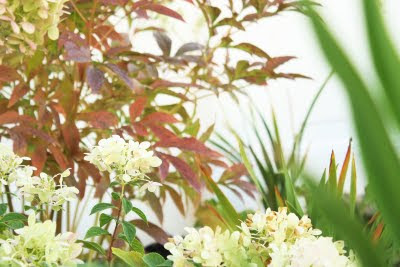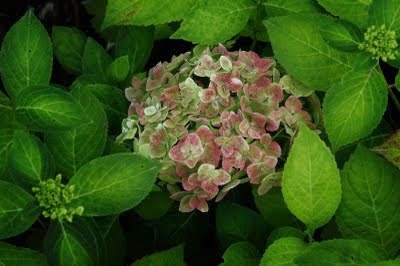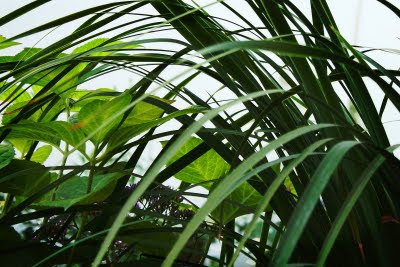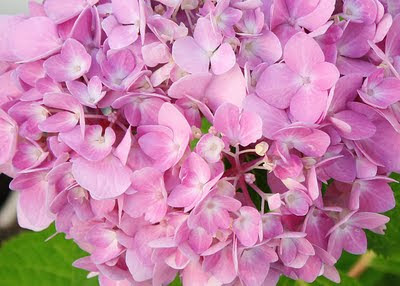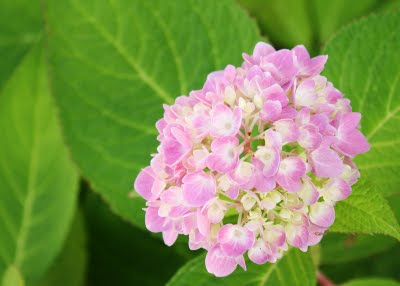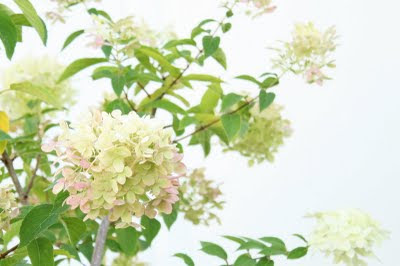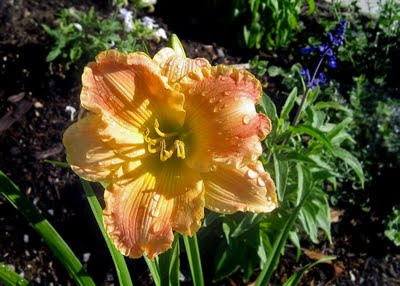
Some of my gardening projects are hitting snags and I'm feeling blue. But since I flunked the Color Recognition part of kindergarten, along with the rest of the horticulture world, I'll be illustrating this post with blue-violet. Above: 'Pagan Purples' delphinium.

We got stuck with the bank of neighborhood mailboxes in our front yard - very unattractive. But I planned to make lemonade from these lemons and create a lovely garden around the mailboxes that would be shaded by a flowering cherry tree. It would be my gift to the neighborhood: instead of confronting the utilitarian grey mailbox structure, neighbors could enjoy a garden encounter each time they picked up mail. But a utility easement (including electric, gas and water lines) might necessitate removing the tree and prevent the planting of any shrubs in that area. Above: Salvia farinacea 'Victoria', aka mealycup sage.

Planting a tree on the west side of your home is an earth-friendly way to reduce air conditioning needs in the summer, so we planted a honey locust to shade our western exposure. But now that same easement might require the tree to be pulled out. Above: Campanula carpatica 'Blue Clips', aka bellflower.

Anti-lawn rants are a frequent part of the garden blogging world. I like the look of lawn, but recognize that large areas of lawn are not perfectly adapted to my climate. I planned to remove some of my lawn and replace it with shrubs and perennials that would require less water and fewer chemicals than grass, but leave part of our front yard as lawn to help our landscape blend into the neighborhood. Above: more 'Pagan Purples' delphinium.

The snag in my lawn removal plans is . . . you guessed it, that same utility easement. How did I get lucky enough to buy one of the few homes in our neighborhood that have an easement along the side that prevents the planting of trees and shrubs without written permission? How come I didn't realize all of this BEFORE we started planting trees and pulling out lawn? Above: Geranium 'Brookside', aka cranesbill.

The original landscaping - including a tree and curbing - intrudes upon the easement, so apparently there is some leeway there. When I talked to an employee of our natural gas company last year, he gave the impression that I could plant whatever I wanted as long as I accepted the risk that it might have to be ripped out and replaced at my expense if a pipe busted and the company had to dig to make repairs. I'm fine with that, and I'm not tempting fate by planting any willows or poplars with crazy-invasive roots. Above: more Salvia farinacea 'Victoria'.

But our neighbors pointed out that the electric company needs to give the permission, so now I need to contact the electric company and ask them to clarify in writing what I can and can't do in my yard. And beg them to please let my trees remain . . . or let me plant a few shrubs even if the trees have to come out . . . or at the very least let me put curbing around the new flower bed so it matches the rest of the yard. Pretty please with a cherry on top. But I hate haggling, so I'm nervous about getting this done. Have any of you gardeners tackled such a problem and worked out a good solution? Wish me luck, I'll need it! Above: a final shot of a drooping cluster of Delphinium 'Pagan Purples". I feel droopy, too.
Added September 29 - I called the electric company yesterday and spoke with a very pleasant woman. She assured me that our landscaping was fine as long as we recognized that we'd have to replace it at our own expense if they needed to dig there. We are going to transplant the honey locust (a 40 feet tall tree at maturity) to a different spot just to be extra careful about root issues with the underground lines. I think I'll plant another crabapple in that spot (only 20 feet tall, with smaller roots as well). So I'm not feeling blue today! Thanks for your encouraging comments; this post and your comments gave me extra courage to tackle the problem.







